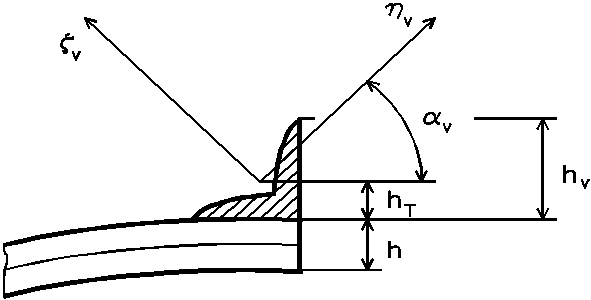Semi-loof edge reinforcement
The reinforcement may be assigned to any edge of the semi-loof element. In the figure, it is assumed that the reinforcement is attached to the top side of the oriented surface. If the reinforcement is attached to the bottom side, the heights $h_T$ a $h_v$ are negative.
Local coordinate system
The axes $\eta_v$ a $\zeta_v$ are the principal central axes of the cross-section. The direction and sense of the axis $\eta_v$ are given by the angle $\alpha_v.$
Geometrical characteristics
| $I_\eta$ | Quadratic moment about the local axis $\eta_v$ $[\text{m}^4].$ |
|---|---|
| $I_\zeta$ | Quadratic moment about the local axis $\zeta_v$ $[\text{m}^4].$ |
| $A$ | Cross-sectional area $[\text{m}^2].$ |
| $\alpha_v$ | The angle which the local axis $\eta_v$ makes with the tangent plane $[^\circ].$ |
| $h_T$ | The distance from the center of gravity to the surface $[\text{m}]$ (negative value if the reinforcement is attached to the bottom side). |
| $h_v$ | Height $[\text{m}]$ (negative value if the reinforcement is attached to the bottom side). |
